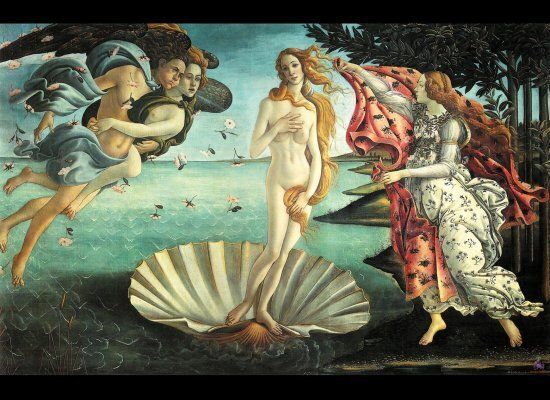Anna Utopia Giordano's photoshopped Renaissance nudes that have been floating around recently have, quite rightly, received praise for illustrating the power of digital distortion in our magazines today. However, the response from the media has, for me, also raised concerns about the way we discuss female body image.
The Guardian picked up the story last week, with an article in which Jonathan Jones describes "the results" of Giordano's work as "shocking and grotesque". The language used here surprised me - yes, the images highlight the huge problem of magazines and adverts using Photoshop to seemingly promote a thin ideal, but are the images "grotesque"?
I was again taken aback by the language employed by the Telegraph, where - in a news article - Venus is described as "look[ing] positively skinny, even anorexic". I take issue with the throwaway use of the word "anorexic"; the reference to the condition is highly inappropriate in this context.
This kind of reaction towards the thinner nudes simply cannot be justified. The photoshopped paintings intend to provoke discussion about the way in which we perceive the female body. But as seen with the examples above, some of the words that have been used indicate that the wrong discussion has been taking place.
And surely we should be reacting against having a feminine ideal, rather than replacing it with another one.
The constant barrage of images that we are faced with, whether it is the models in Vogue or photos of celebrities in Heat magazine, points towards the association that exists within our culture of being thin with being beautiful. Giordano's project, which features representations of Venus (including Botticelli's The Birth of Venus) with altered proportions, clearly draws attention to this issue.
Yet, of course some women are, by nature, thinner than others. Implicit, indeed sometimes explicit, in the media response to the reworked paintings is that we should prefer voluptuous women over their slimmer counterparts. This is just as dangerous as propagating the notion that thin equals beautiful.
The reaction underlines the wider problem of the language used to talk about shape, weight and size, and the seeming tendency to clutch at various ideas of "perfection".
Eva Wiseman wrote an excellent column earlier this month about our attitudes towards body image, particularly regarding the way that magazines have put forward Adele as a "shapely" size 16 woman. Wiseman concludes: "Whether the trend is thinness or fatness, we should not be encouraging each other to change our body shapes for fashion."
The piece prompted a discussion on my Twitter feed, with Guardian beauty columnist Sali Hughes objecting to the term "real woman", tweeting: "I am real, thanks."
Giordano has highlighted the ability of magazines to digitally manipulate images in order to achieve a very specific idea of "perfection". But it is crucial that we do not replace one ideal with another: voluptuous is not better than slim, or athletic. The cliché is that women come in different shapes and sizes - and that's the way it should be.

Image: Anna Utopia Giordano